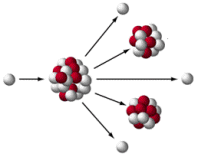
Nuclear Scientists are responsible people. They hold our future in their hands. They can not compromise on safety and demand the best tools for the job. Here at ACM we have built corrosion monitoring systems for the Nuclear Industry since 1986, in many cases designing unique systems as required by the nuclear scientist.
We have listened to our nuclear customers, incorporating design features and techniques from their requirements into our standard products, for the benefit of all. The instruments may be divided into three ranges, laboratory, portable, and fixed plant. The laboratory equipment most often specified by our nuclear scientist customers is the Gill 8 for its full complement of electrochemical tests, multiple channels and powerful output. The smaller brother to the Gill 8 is the Gill AC which for a lower price performs the same tests on a single channel at reduced power. The Gill AC does perform one amazing trick: multiple instruments may be operated from one Sequencer on one PC to form a very powerful simultaneous multichannel instrument. For testing localised and galvanic corrosion our GalvoGill 12 will measure galvanic currents and potentials from 12 separate cells, the Isolated 30 performs the same test using 30 electrodes pairs, each pair galvanically isolated from the other pairs in the electrolyte. Both these instruments were originally designed for, and ordered by, the nuclear industry. The use of portable corrosion monitoring equipment in the nuclear industry covers all aspects of this field. Pipes corrode, storage tanks corrode, rebars in concrete corrode, heat exchangers corrode, fuel cans corrode, the list is enormous and ACM have made the perfect portable instrument for the nuclear scientist, the Field Machine. Covering all corrosion tests the Field Machine is the preferred instrument for portable nuclear monitoring.Our nuclear customers have requested systems to monitor corrosion in active sites. Due to radiation these often have no physical access after installation and ACM was chosen because of our reputation for reliability. Examples include: Monitoring long term corrosion by marine air in a low level waste building using the LPR 485. Using current and voltage noise to determine localised corrosion in relation to differing water chemistry at 13 locations in a nuclear dissolver plant the Plant Noise Apparatus proved ideal and very reliable. We have built systems to monitor Electrical Resistance (ER) in embedded waste drums, another system to monitor scratch currents from diamond scratched passive alloys, an ultrasonic depth gauge for lowering into reactors, plus many and varied custom products for our nuclear customers.
See Application Notes for more information on AC Impedance, ER, Current and Voltage Noise and LPR techniques plus many more.
See Downloads for instrumentation datasheets.
